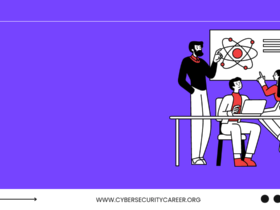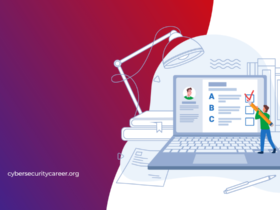In today’s digital world, cyber security risks have become a major concern for individuals and businesses alike. With the increasing amount of sensitive information being stored online, it has never been more important to protect yourself from potential threats. In this blog post, we will explore what cyber security is, the different types of cyber security risks that exist, and provide tips on how you can protect yourself from them. Whether you’re an individual or a business owner looking to safeguard your assets against malicious attackers, read on to learn about the best practices for staying secure in the digital age!
What is cyber security?
Cyber security refers to the practice of protecting electronic data and information systems from unauthorized access, theft, damage or any other malicious activity. With the rise of technology in every aspect of our lives, cyber attacks have become more sophisticated and complex over time.
The goal of cyber security is to ensure that sensitive information remains secure and confidential while being accessible only by authorized individuals. This includes protecting personal data such as financial records, medical records and social media profiles. Cyber security also extends to safeguarding company secrets like intellectual property rights, trade secrets and confidential business plans.
In essence, cyber security involves a range of measures designed to prevent unauthorized access to computer networks or individual devices. These measures can include firewalls, antivirus software programs, encryption methods and password-protected user accounts.
Ultimately, ensuring strong cyber security practices is essential for both individuals and businesses alike. By taking proactive steps towards protection against potential threats online we can minimize the risk posed by malicious actors seeking to exploit vulnerabilities in our digital infrastructure.
The different types of cyber security risks
Cyber security risks are becoming increasingly common in today’s digital age. It is important to be aware of the different types of cyber security risks that can threaten individuals and businesses alike.
One type of cyber security risk is phishing, where attackers trick users into providing sensitive information such as passwords or credit card details through fake emails or websites. Another risk is malware, which infects a computer system and can steal data or cause damage to the network.
Ransomware is another form of cyber threat where attackers encrypt files on a victim’s device and demand payment for their release. Social engineering attacks involve manipulating people into divulging confidential information or performing actions that could compromise their accounts.
Denial-of-Service (DoS) attacks are also prevalent, where an attacker floods a website with traffic until it crashes and becomes unavailable to legitimate users. There are Advanced Persistent Threats (APTs), which target high-value targets over extended periods using sophisticated techniques to evade detection.
Being aware of these different types of cyber threats can help you take steps to protect yourself from potential attacks.
How to protect yourself from cyber security risks
In today’s digital age, it is crucial to protect yourself from cyber security risks. Here are some tips to help you stay safe online.
Firstly, always keep your software up-to-date. This includes your operating system and any applications you use regularly. Updates often contain important security patches that can prevent cyber attacks.
Secondly, be cautious when clicking on links or downloading attachments from unknown sources. These can often contain malware or viruses that could harm your device and compromise your personal information.
Thirdly, create strong passwords for all of your accounts and change them frequently. Use a combination of uppercase letters, lowercase letters, numbers and special characters to make it difficult for hackers to guess.
Fourthly, be mindful of the information you share online. Avoid posting sensitive personal details such as your home address or financial information on social media platforms or other public forums.
Consider using antivirus software or a virtual private network (VPN) for added protection when browsing the web. These tools can encrypt your internet connection and block malicious websites from accessing your device.
By following these simple steps, you can greatly reduce the risk of falling victim to cyber security threats and safeguard both yourself and your personal data online.
Cyber security tips for businesses
The digital landscape is constantly evolving, and businesses need to be on their toes to protect themselves from cyber security threats. One essential tip for businesses is to invest in robust security software. This includes antivirus programs, firewalls, and intrusion detection systems that can identify potential risks before they cause damage.
Employee education plays a pivotal role in securing your business’s digital assets as well. Conduct regular training sessions about the latest cyber threats and how employees should respond if they encounter any suspicious activity online. Encourage them to report incidents promptly so your IT team can take appropriate action.
Implementing strong password policies will also enhance your protection against unauthorized access. Require staff members to create complex passwords that are hard to guess, change them frequently and never share them with anyone else.
Another vital step towards ensuring cybersecurity within your organization is keeping all software up-to-date. Regularly update operating systems, applications, and firmware on devices connected to the network since outdated software often has known vulnerabilities that hackers can exploit.
Consider employing multi-factor authentication (MFA) wherever possible – especially for remote workers accessing company resources from unfamiliar networks or personal devices. MFA adds an extra layer of security by requiring users to provide at least two forms of identification before granting access: something they know (password), something they have (security token), or something they are (biometric data).
Conclusion
In today’s digital age, cyber threats are a real and present danger. Cyber security risks can affect individuals and businesses alike, causing financial losses and reputational damage. It is crucial to be aware of the different types of cyber security risks such as phishing scams, malware attacks or identity thefts.
Protecting yourself from these threats requires vigilance and best practices such as using strong passwords, updating your software regularly or being cautious when sharing personal information online. For businesses, it is essential to have a comprehensive cyber security strategy that includes employee training programs and incident response plans.
By taking proactive measures against potential cyber security threats, you can mitigate the risk and protect what matters most- your sensitive data. Stay informed about new threats emerging in the cyberspace landscape so that you can take the necessary steps to safeguard yourself from them.
Remember: Cybersecurity is everyone’s responsibility!










Leave a Reply